






For a long time, Que Ondee Sola (QOS) has been a place for Puerto Ricans across campus and across the world to gather and make their voices heard. In recent years Que Ondee Sola has shifted from what we feel the main focus should be, a paper focused on local community issues, filled with history on the struggles of the Puerto Rican people both past and present to educate the masses. As Puerto Rican enrollment rates at the university dropped, in a bid for survival Que Ondee Sola turned to cater towards the more mainstream Latinx community. And while we appreciate our former Que Ondee Sola contributors for keeping this organization alive, we feel that it distracts from the original purpose of QOS.
Que Ondee Sola means may it wave alone, referring to waving the Puerto Rican flag alone. There was a time in Puerto Rican history when you would be imprisoned for doing that, the name Que Ondee Sola has a meaning.
Que Ondee Sola was established in 1972 and remains the oldest Puerto Rican and Latinx university student publication in the United States. Our mission is to provide the Northeastern Illinois University community with an engaging publication with a focus on Puerto Rico’s historical and sociopolitical issues.The colonization of Puerto Rico began in 1493 and has never ceased since. Puerto Rico remains the world’s oldest colony.
Colonization and its legacy impact the lives of a majority of the world’s population from the Caribbean and Latin America to Africa, Asia, the islands of the Pacific, and everywhere in between. Indigenous people in Australia, New Zealand, Canada, the United States, Greenland, and elsewhere worldwide continue to struggle against subjugation and indignity. We must acknowledge that colonialism in all of its forms unjustly confines the human spirit. While our primary focus is on issues that relate to the Puerto Rican people, these are issues that are universal in many ways. We seek to highlight these issues as they impact others and seek solidarity so that all oppressed peoples of the world can realize liberation.

A New Chapter, Same Fight __________________pg.0

Meet The Staff ___________________________pg.1
Crimes Against Humanity: Apartheid and PROMESA ____________________pg.2 The Son of the Moon_______________________pg.6
50-Year Testimony of Gentrification on My Block___________________pg.7
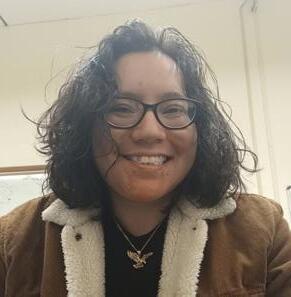

Submissions From Stateville: _________________pg.8
-Freedom To Me________________________pg.9
-Letter to Que Ondee Sola_________________pg.10
Los Pájaros Y Las Abejas: The History of Sex in LATAM _________________pg.14

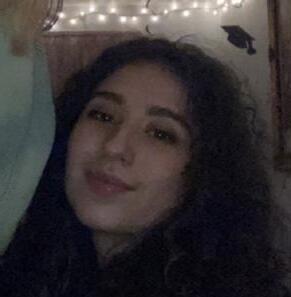
Humboldt Park and What it Needs _____________pg.16
La Voz Supporter Section ___________________pg.18
La Olla _______________________________ pg.23
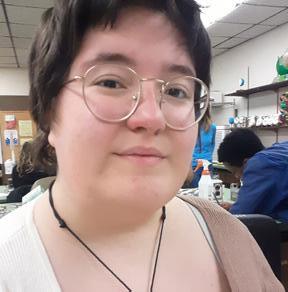
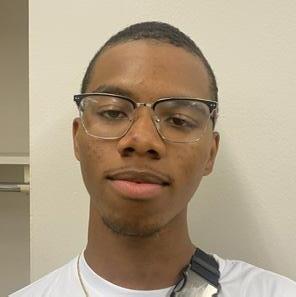

Please Reach Out ________________________pg.24 Supporter
Xavier Morales-Greene (He/Him) Head of Que Ondee Sola Jasmine Rodriguez (She/Her) Managing Editor Crystal Lynn Pérez (She/Her) Writer Jesus Robles (He/Him) Head of Visual Art Department Clay Cofre (They/He) Writer/Visual Artist Logan Leflore (He/Him) Vistual Artist Dennis Sagel (He/Him) Student Media coordintor Sophia Ruiz (They/She) WriterThis article is an edited excerpt from an undergraduate thesis completed in December of 2019. The broad purpose was to look at Puerto Rican history through a largely unique lens: the International Criminal Court (ICC) and the adjudication of possible crimes against humanity committed in Puerto Rico by the United States. Since then, much has transpired in Puerto Rico, but little of what has developed is good news as far as Puerto Rican sovereignty is concerned: the privatization of electric utilities, earthquakes complicating continued efforts to rebuild from devastating hurricanes, rampant political corruption exposed, universities hemorrhaging funding, and the decennial census revealing a rapidly decreasing population on the island. And that’s just what makes the headlines. There is much hope to be found, but the cause of Puerto Rican liberation can sometimes feel like it is on the proverbial ropes – a slow motion last-stand if you’re feeling pessimistic. Still, I cannot say I have given up, nor that we should. Instead, we continue to defiantly declare our love for our inheritance of waterfalls and sharks – as the poet Martín Espada would say. History is ours, we can make it, but first we must know it. This excerpt is focused on PROMESA and the crime of apartheid.
It was the Rome Statute in 1998 that effectively founded the ICC. The ICC was founded with the intent to bring justice to state actors who committed atrocities and it finds its ideological roots in the Nuremberg Trials after World War II and the subsequent attempts by the international community to rectify mass-criminality throughout the rest of the 20th century. While the United States is not currently a signatory to the Rome Statute, this exercise is still important.
Article 7, §1, of the Rome Statute defines crimes against humanity as “any of the following acts when committed as part of a widespread or systematic attack directed against any civilian population,” and §1, part J, lists one of the acts as “the crime of apartheid.” Apartheid was best known as the racially repressive regime in South Africa in the 20th century, but accusations of apartheid regimes have been leveled against other nations since then. Although initially seemingly a stretch, an uncomfortably viable argument is available that the island of Puerto Rico is in an enforced quasiapartheid state due to the widespread economic repression and second-class citizenship imposed upon the island by mainland authorities. Mainland US domination and repression of the Puerto Rican economy from the sugar barons in the early 20th century to the Puerto Rico Oversight, Management, and Economic Stability Act (PROMESA) of today shows the historical breadth of this issue. With the early 20th century Insular Cases, the Gag Law in 1948, and other legal methods, a form of second-class citizenship was created and maintained. Historically, United States mainland economic interests kept wages in Puerto Rico artificially low, took control of the sugar industry among others, and prevented the island from free trade with other nations. As tax breaks dwindled, American corporate interests turned to debt collection as a way of extracting more wealth from the island. Finally, amid economic crisis, the Obama administration established the PROMESA Board, made up of mainland bankers and economists. “At its sole discretion, the Board can require that the governor provide budgets, or monthly or quarterly reports, of any ‘covered territorial instrumentality as
[it] determines to be necessary.’” As it restructures the immense debt on the island, “the Board can ask any Puerto Rican government official for any information that it deems necessary to carry out its responsibilities.” The austerity measures the unelected Board controls include approval of the island’s budget, the authority to institute hiring freezes and the ability to prohibit any contracts or transactions. This is “fundamentally incompatible with UN standards for self-government.” In short, the appointed Oversight Board today has immense power and control over Puerto Rico and uses this power to further the interests of mainland debt collectors in ensuring the collection of remaining wealth from the island.
Continue reading on page 4...


These policies have had the direct effect of creating immense poverty and desperation among Puerto Ricans.
Over 60% of residents even before Hurricane Maria were on Medicare and Medicaid, while federal funding for the programs was capped at $300 million, unlike in the states where it is allocated by per capita income.
PROMESA lowered the minimum wage in Puerto Rico to just over half the federal minimum wage. Over half of residents live in poverty and Puerto Rico would be the poorest state in the US if it were a state. “Indeed, the median U.S. citizen living in Puerto Rico is about 63% poorer than his counterpart on the mainland.” Despite this, residents of Puerto Rico are not able to qualify for Supplemental Security Income (SSI) and there are “no healthcare exchanges in the territory, and thus no subsidies for individuals who buy insurance.”
Politically, although there are over 3 million residents, Puerto Rico has no voting member in Congress and cannot vote for the President of the United States. Despite the 1952 reforms, “the current ‘Commonwealth’ status is a colonial regime that allocates to the United States Congress the ultimate authority… the commonwealth status legally constructs Puerto Ricans on the island as second-class citizens.” Facing myriad issues, Puerto Ricans have no meaningful representation to those who are in control of the processes that govern the territory. In numerous ways the United States historically has and continues to treat Puerto Ricans as second-class citizens.
United States courts themselves have affirmed this as true. In a ruling in spring of 2019 in the case of US v. Vaello-Madero authored by Federal District Court Judge Gustavo Gelpí (now
on the 1st Circuit Court of Appeals), a George Bush appointee, the Court found that the denial of SSI benefits created de facto apartheid discrimination. In a lengthy decision, Gelpí wrote about the racist and imperialist origins of the Insular Cases and concluded that Puerto Ricans cannot justifiably face the “stigma of inferior citizenship to that of his brethren nationwide. To hold otherwise would run afoul of the sacrosanct principle embodied in the Declaration of Independence that ‘All Men are Created Equal’.” Judge Gelpí summarized the issue at hand succinctly: “United States citizens residing in Puerto Rico are deprived of receiving SSI benefits based solely on the fact that they live in a United States territory. Classifying a group of the Nation’s poor and medically neediest United States citizens as ‘second tier’ simply because they reside in Puerto Rico is by no means rational.” Because this exclusion was an act of Congress, it was “federal legislation that creates a citizenship apartheid based on historical and social ethnicity within United States soil... It is in the Court’s responsibility to protect these rights if the other branches do not.” After going so far as to call it citizenship apartheid, he concluded: “Allowing a United States citizen in Puerto Rico that is poor and disabled to be denied SSI disability payments creates an impermissible second rate citizenship akin to that premised on race and amounts to Congress switching off the Constitution.” The 1st Circuit Court affirmed the decision in 2020, albeit for different reasons. Nonetheless, the US Supreme Court, relying in part on precedent established by the Insular Cases and largely unwilling to throw out that precedent or rationale yet, ruled 8-1 to overturn the decision in 2022. Only Justice Sonia Sotomayor dissented.
What all of these add up to is a recognition of second-class citizenship for Puerto Ricans not merely by accident but through direct laws and policies for decades. Although defining this as apartheid would still constitute a liberal application of the term for the ICC, it is not entirely inaccurate or improbable that the ICC could choose to investigate. Residents of Puerto Rico face secondclass citizenship coupled with over a century of economic exploitation, which is now even more flagrant because of PROMESA. That said, as much as the impact has certainly been unjust, and even reminiscent of a quasi-apartheid state, it is unclear if there is a strong enough case for intent as opposed to mere impact. Racism had a strong role to play in the forming of Puerto Ricans legal status, but the economic exploitation has likely been less due to malicious apartheid regime planning and more a result of the nature of exploitative capital. The colonial relationship of extracting wealth for a select few mostly non-native business interests at the expense of most people living there is without a doubt unethical and wrong, but if the ICC is strict about the literal meaning and translation of its statutes, defining the current relationship as one of apartheid is a stretch. Nonetheless, if the Court is truly bold about justice and standing up to a global power unused to accountability for its actions, it is wholly possible for the ICC to pursue a case here.
The remedies to bring justice to Puerto Rico are for the ICC to investigate and, even though they do not have jurisdiction as the US is not a party to the Rome Statute, make suggestions –both historical and contemporary – for who ought to be held culpable. Further, truth and reconciliation commissions
along with forms of transitional and restorative justice could make a positive impact. Additionally, if the US relationship with Puerto Rico is to adequately improve, the UN must, once again, look at adding the island to its list of non-self-governing territories to recommend true decolonization.
In terms of criminal prosecutions, the ICC is unlikely to ever conduct any due to the nature of the Court’s relationship with the US. Nonetheless, it is important as a matter of historical record to conduct this exercise. First, it bolsters the ability of other international bodies like the UN to be able to take up the issue of the status of Puerto Rico. Second, justice delayed is a tragedy, but it is indubitably better than the screaming silence of forgetting these tragedies altogether. The example of Cambodia and the active struggle today for truth and justice in the Armenian genocide are cases in point. To bring them up and retroactively rule or make suggestions is a matter of correcting the historical record to what ought to have been done. In the case of PROMESA and the response after Hurricane Maria, living legislators, appointed Board members, former Presidents Barack Obama or Donald Trump, or current President Joseph Biden could be castigated by the Court for their roles in forcing an unjust and internationally illegal system of inequality and oppression upon the Puerto Rican people.
What may be necessary, too, given the long history of systemic harm placed upon the island, is a system of transitional justice. That could include some form of truth and reconciliation commission as in several cases in South Africa and Latin America to address the past in a restorative way. More radically, transitional justice could include reparations and debt forgiveness for economic, social, and political harm in Puerto Rico. Several countries have done so before after crimes against humanity,
including the US itself in limited instances.
Another remedy would be through the UN, which would surely benefit from an ICC investigation into crimes against humanity in the Puerto Rican context. While the US as a permanent member of the Security Council retains veto power, the attempt itself would be a significant step forward even if blocked through formal channels. The UN Special Committee on Decolonization had previously decided in 1953 to remove Puerto Rico from the list of non-self-governing territories, meaning the US no longer had to submit an annual report on social and economic conditions to the Secretary General. Most importantly, it meant that the US finally had cover from Soviet accusations that it was a colonial power.
What is clear today is that the colonial relationship never ceased simply because of the partial legal reforms adopted on the island in 1952. In fact, the island today is still less free than under Spain and the Autonomic Charter of 1897, making a truly free, fair, and binding referendum on the island’s status unmarred by the issues of past referenda even more important. The world’s oldest colony needs to be recognized as such in order that the mainland US and international community may then grapple with the ramifications of this simple – if uncomfortable – truth and adequately chart a just path forward. The global community must recognize that “Puerto Rico’s heart is not American. It is Puerto Rican.”

At times, we may feel like fleeing, but we must continue on and fight for our lives. The journey is long as it is hard. We ask ourselves if the sun will rise once more and lay its luminous glow on our deprived cells once again?
It is an exhausting endeavor, all of this. To have fought so wildly…for crumbs. Distress, sorrow, and solitude encompass my essence. Once free, running barefoot through the floating meadows, now only to peek through the blinds wishing upon a star, upon a comet. Once upon a time, there was someone with feral dreams that was washed away in a great flood, only this time, there was no ark to sail the seven seas. Floating dreams, faraway echoes, and chilly midair blues.
How I relish to return, but sometimes our missteps are immortal and demand blood. As of late, I have no pockets, and perhaps neither a body. Exhaustion encompasses me, and so too does the urge to fall into a deep, deep slumber. A slumber where I can feel the memories of the wind comb through my mangled hair, while the passion of the sun burnishes my heart. It is always a sea I see, with dolphins galloping through the waves. It is also the warmest place I know, and I do not want to abandon it.
I cannot pretend to explain through words, other than ‘freedom’. The freedom to be free. Wake up from this silencing slumber, as you will feel that warmth once more. Do not fear, for the sun god always soars in his majestic brilliance, ready to bestow upon the great land great hopes.
By Jasmine Rodriguez, Managing EditorSummer is the time for parades, pride, festivals, concerts, and parties, but I can see Logan Square changing, the summers are no longer the same. The most noticeable change has been over the past two years with the 2600 Belden Block Party. From the front porch, the gentrification has been made visible between the two communities during those block parties.
While I’ve only lived on the Belden block for six years, my Tio Mario has lived in the Logan Square neighborhood for 50. In his interview, Gumaro “Mario” Salgado speaks about moving to a new country from Guerrero, Mexico as a young immigrant.
At the age of 8 years old, he experienced his first winter in 1972. His family moved to a “different” neighborhood as the “first Mexican family” on Belden Avenue. According to the 1970 census, Logan Square was a predominantly white neighborhood with a population of 85,000 people with 8,000 Latinx residents. Despite the racial differences, Mario has fond memories of growing up here.
Even though he lived across the street from a punch press and denim fabric factory, he made friends on the block. He learned English from his Goethe Elementary School classmates, the white kids who were also his neighbors. My Tio made a point to tell me about the famous alumni in his school, as he holds a great deal of pride surrounding the fact that an actor from the TV sitcom “I Dream of Genie” and a NASA astronaut graduated from here. At the time, it was a “good education for parents” because it was close for them to drop off their kids at school and quickly go to work in the city. While reminiscing on his favorite spots as a kid, my Tio mentioned, the small businesses
like the hotdog stand from the 50s on the corner of Milwaukee and Prineville Street named “Chick’s”. His family had to buy beans and tortillas from the “Cuatro Caminos” owned by a Cuban, the only Mexican restaurant was “El Taco Loco”, and his dad owned a tavern across from the U.S. Postal Office. But my Tio enjoyed watching the movies at the Congress Theater from the film projector room.
While the Latinx population grew, the white population declined to 36,000 and Latinx became the majority by 1980. However, Professor John Betancur of urban planning at the University of Illinois at Chicago warned that “white residents are moving back to the city, [and] they typically flock to Latino neighborhoods that have access to public transit and are close to downtown” in Block Club’s 2018 article. In fact, my Tio has witnessed the “new development” in the Belden Avenue neighborhood, slowly morphing as the “center of the city”.
After 6 years, the abandoned punch press and denim fabric factory was remodeled into luxury lofts. The Mexican bakery underneath the California Blue Line closed that ended the aroma of freshly baked goods. New apartment buildings on Milwaukee and California Street were built with rent ranging from $2,500 to $3,000. The property taxes “skyrocketed” as the neighborhood slowly pushed out the smaller owned businesses such as “Cafeteria Marianao” a Cuban sandwich shop that closed down and moved to Armitage Avenue. Currently, “Victory Grill” is located there. Even Cozy Corner Restaurant & Pancake House expanded and bought Milwaukee and California Produce. Yet, the biggest change was the Congress Theater, which officially closed in 2013.

As of 2021, the Chicago Metropolitan Agency for Planning’s community data reports Logan Square is “51.8% white (Non-Hispanic)” with “34.5% Hispanic or Latino (of any Race)”. Although, Here to Stay Community Land Trust hopes to, “interrupt the patterns of displacement and gentrification in black and brown communities by providing a mechanism for the community to own land and compete with cash buyers to create affordable homeownership for legacy families.” Program Director Kristin Horne “blamed decades of redlining and discriminatory lending practices that allowed the community’s white population to be upwardly mobile, while denying mortgages to a large number of minority residents” according to Chicago Tribune reporter William Lee.
Due to property taxes and higher rent, my Tio states Logan Square is a “good place to live if you got the money”. Despite the displacement, he wishes to see Congress Theater open for the community as a historical landmark to create a plaque that commemorates the “roots that got here”. He hopes it can be a positive experience for future generations to “get along” and enjoy watching movies, seeing plays, and laughing at comedians on stage as he did.

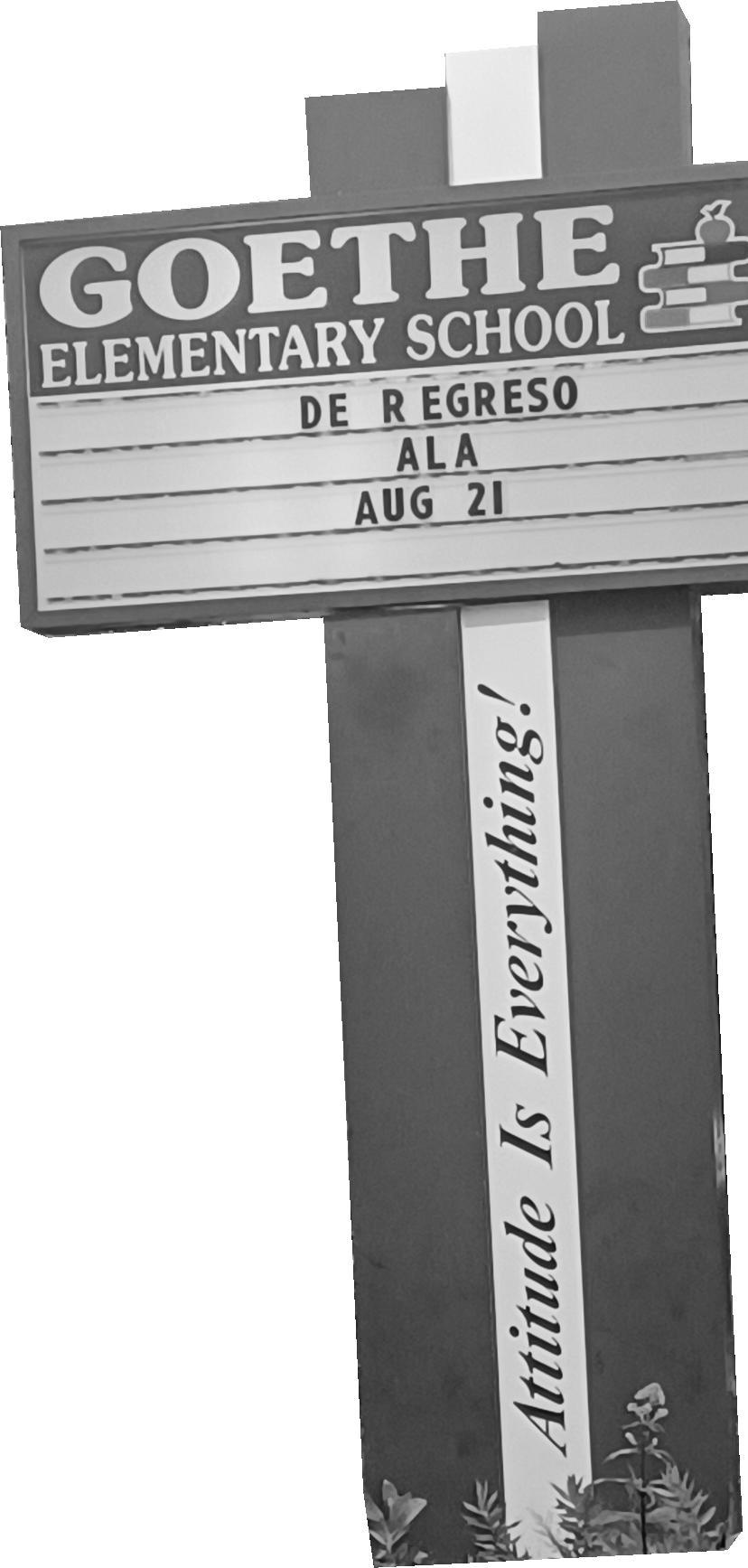



Freedom to me is like a woman, Slowly you trickle down my mind my spine
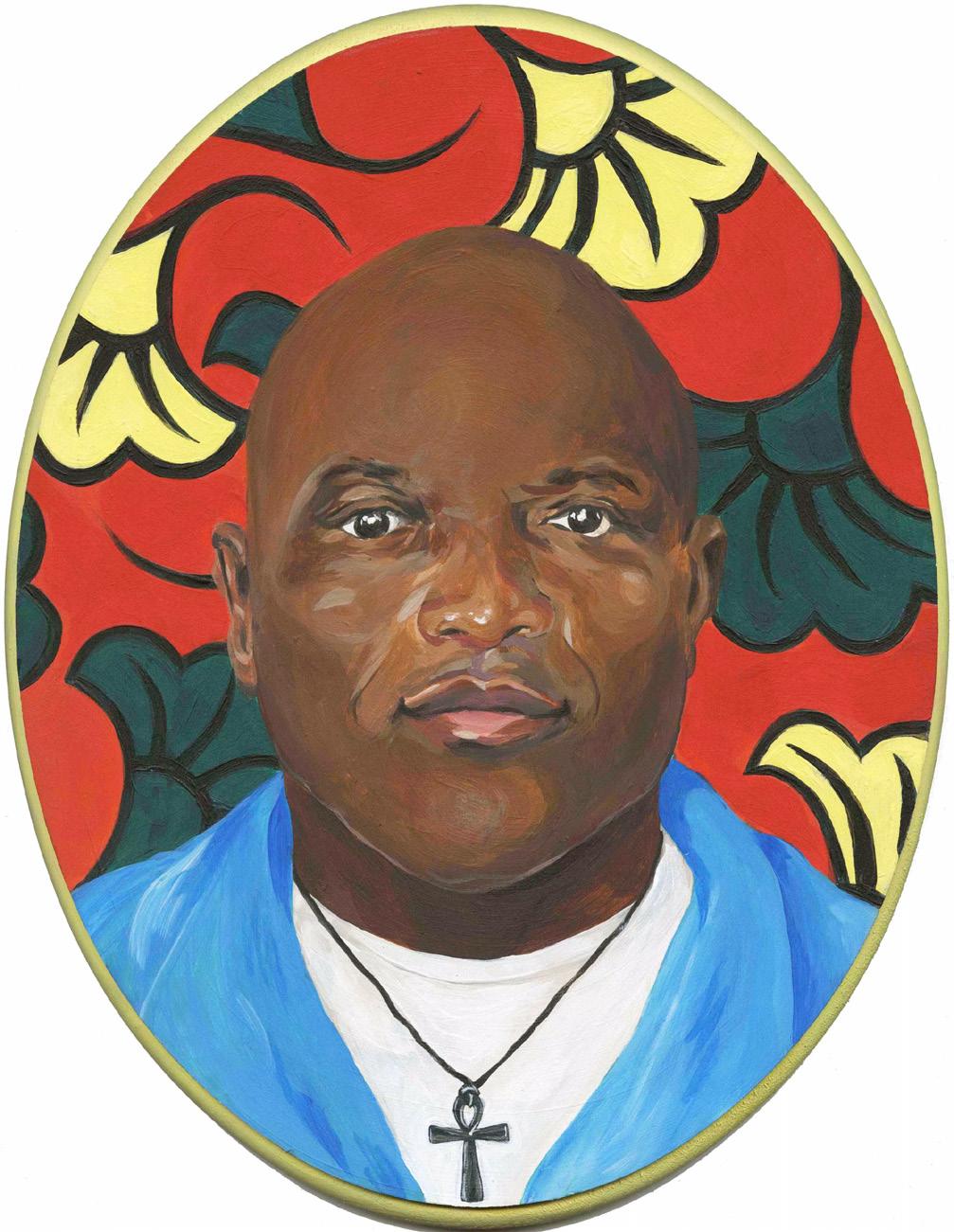
Freedom to me is like a breath of fresh air, I inhale deeply And exhale delib[e]rately
Freedom to me is like earring my moma’s banana pudding pie it taste so good you wanna cry
Freedom to me is like being responsible a father, a Grandfather, a son, a brother
Freedom to me is like a struggle, overcoming adversity because it breeds character
Freedom to me is like the four leaf clover, you know it exist And yet it is still hard to find But one day, Someday, I know it be mines
Letter
 By Dan Perkins
By Dan Perkins

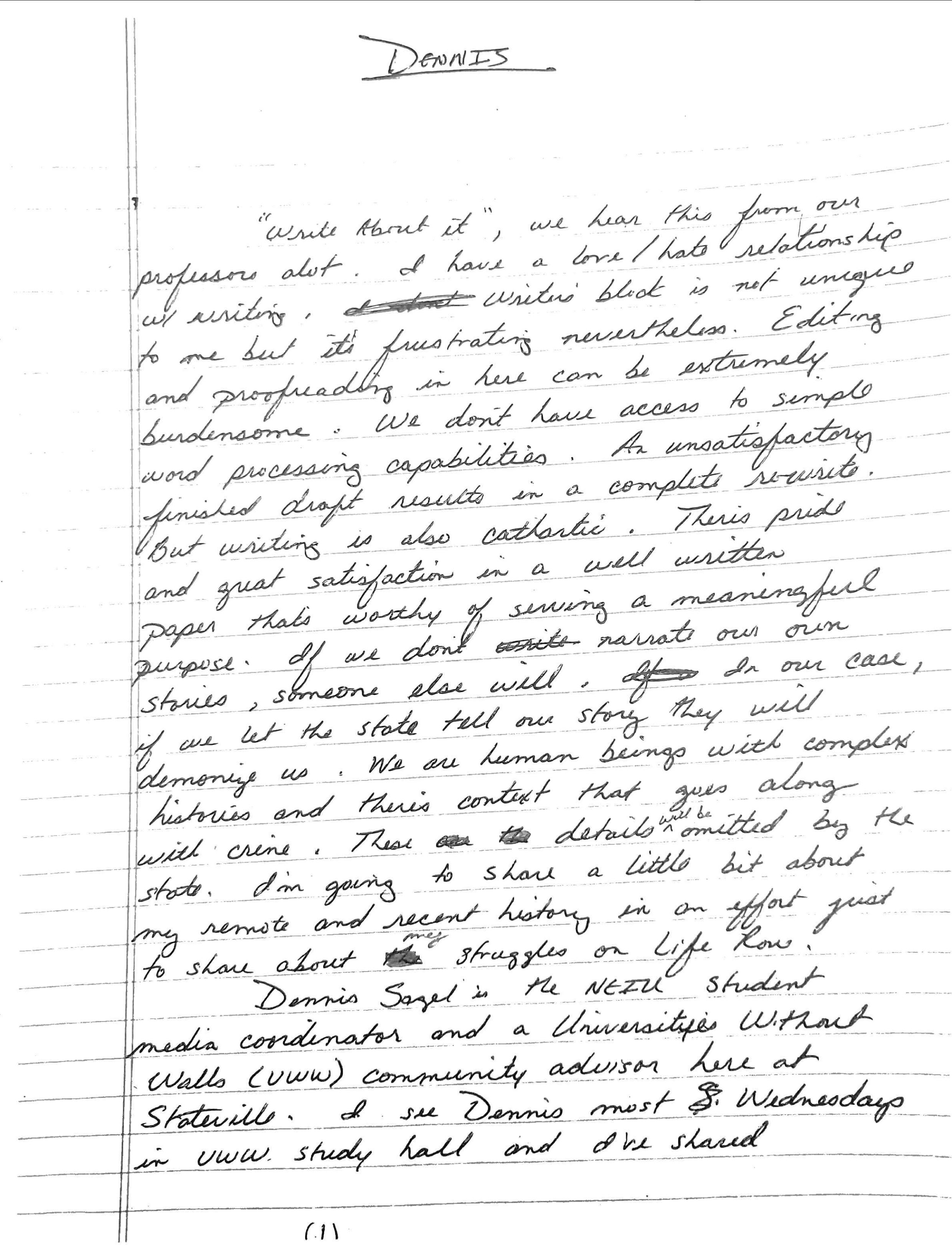


To continue this Reading scan the QR code below.

Everyone does it. Birds, bees, cats, and stoned college kids. Depending on who you are though, the attitude towards such a normal (and fun) part of life can be stuffy and conservative. If you’re Latine, you were most likely told it is saved for marriage and baby-making by the Word of God. If done out of wedlock, you’re no good and a lady of the night. While not healthy, you can't exactly blame the people that parrot these sentences. So what do they do? They do not say anything else about it.
“Growing up as a young Filipino and Puerto Rican woman in the Bronx with strict Catholic parents, conversations about sex were off the table. The message was ‘Just don’t do it,’ driven by the logic, ‘If I talk to you about it, you might want to do it.’”, writes Angelique Molina-Mangaroo in her Huffington Post article on the subject of teaching sex ed to Hispanic/latine kids in her area. If the adults in our lives don’t teach us, this can be where the problems start, so we need to start from the beginning to improve things.
Though it is not welldocumented due to the relentless effects of colonization, our Taino ancestors are believed to have held no stigmas surrounding the concept of sexuality.
According to an article written by Kathleen Deagan titled “Reconsidering Taíno Social Dynamics after Spanish Conquest: Gender and Class in Culture Contact Studies” for an archeological journal in Cambridge, England, Dr. Deagan writes “Our results, organized by a household-scale analytical framework emphasizing Taíno constructions of gender and class, suggest that there were few major alterations to traditional Taíno social practice during the post-contact period, and most of these were related to activities thought to have been the
domain of non-elite Taíno men.”
So gender roles were not exactly a thing in our ancestor's time, what does that have to do with their sexuality? Nothing and everything. Stay with me now. Before colonization, it is believed that many individuals could marry whoever they wanted, as long as it was someone from a neighboring tribe. That means men could marry men, women could marry women, and you could even marry both if you wanted. A nagua, which is regalia worn often by married women in those times, was recorded as being worn by men as well. On the same subject stated by the Florida Museum, “Documentary accounts at the time of contact indicate that although the paramount rulers among the Taíno were most often men, women could also be caciques. Women seem to have participated at all levels in the political hierarchy, both wielding power and accumulating wealth. Pre-contact gender roles among the Taíno are not well understood, but most researchers indicated that gender roles among the Taíno were relatively non-exclusive, from political leadership and fighting as warriors to food production. There were few social or economic activities that were assigned to only either men or only women. For example, constructing the conucos (raised mounds for farming) was done by men, and preparing the manioc was done by women, but both genders tilled, planted and harvested the fields.”
Did you know that there is even a deity for sex? In a book written by Thelvia Marin, Corocote is known as the zemi, or ancestral spirit, for romance and sexual pleasure, representing sexual virility and carnal love. So if we were so open to love and sex, what happened? Well, the Catholic church happened. When the Spanish encountered the
Taino free love society, they saw only one thing. Sin. Everyone was as naked as the day their mother bore them, some wearing only their nagua, so they freaked out. Because of this, they immediately saw them as lesser than or barely even human. Women and men were raped, children taken and killed, and genitals severely mutilated by slicing them off. The Taino people were tortured into seeing their ways as an act of defiance against the Catholic Church, which moves us into what came afterward. If you were raised Catholic, like I was, you know their enforced views of sexuality and sex. “Do not have sex till you are married, and do not be anything other than straight or else.”
So in modern times what does sex education look like in Puerto Rico? To be blunt, it sucks. According to the Sex Education Collaborative, while schools are required to teach it, the curriculum is not required to be comprehensive. There is no instruction on learning basic consent, and it does not even have to be medically accurate. “While schools in Puerto Rico are required to teach sex education, [the] curriculum is largely determined by each school district. Such discretion in sex education curriculum allows for the implementation of policies and [curricula] that stigmatize marginalized youth, such as LGBTQ youth, and presents further challenges in ensuring that low-income districts have access to resources to implement comprehensive sex education. Educators report teaching primarily abstinence-based lessons from textbooks that are outdated and in poor condition. They note an urgent need for updated curriculum and course materials. Outdated curriculum is one of many barriers to advancing sex education in Puerto Rico. Advocates [for better sex education in Puerto Rico] report that the Department of Education’s removal of the gender perspectives curriculum policy, conservative community and legislative perspectives, and bureaucracy in implementing advanced policies all inhibit young people from accessing advanced sex education.” writes Sexuality Information and Education
emergency contraceptives, birth control (ranging from the pill to the implant), HIV services, Trans hormone therapy, sex education, pregnancy tests and services, STD testing, and general AFAB healthcare. (You will need health insurance to be seen here, or else you’ll end up like me and have to pay a bill of $1,658. But they do give out free condoms and dental dams!)
• Women’s Aid Center


Council of the United States (SIECUS), an organization that looks to improve sex education in the United States and its territories. Not only can inaccurate and outdated sex education cause higher rates of teen pregnancy, but it can also create a rise in STD/STI spreading. So what can we in our twenties do? While we most likely cannot change how our elders or aunties think about sex, we can ensure that the next generations have better opportunities and resources for education and health. “As a sex educator, it is my job to deliver medically accurate, comprehensive, inclusive and intersectional sex education. Teaching sex education in the Latinx community means overcoming cultural barriers that have been reinforced by patriarchal systems time and time again. To combat this, when talking to young Latinas about sexual health, I normalize the idea of bodily autonomy and the importance of making informed choices by letting them know that they are allowed to say “no.” writes Angelique MolinaMangaroo.
This is what I aim to do with this article. Below, I have provided some of the places in the Chicago area that can provide free or low-cost healthcare when needed. This includes discreet birth control and abortion services, and testing for STDs. I advise anyone who reads this to pass this information off to friends and family, Rip the page out if you want to!
IMPORTANT NOTE: Pregnancy Care Centers, or Crisis Pregnancy Centers, are NOT clinics. In a statement put out by the American Clinic of Obstetricians and Gynecologists (ACOG), they are essentially only used to shame women/ AFAB people into not having an abortion. Abortion reversal pills, what they offer, have not been proven safe in medically reliable studies. Whatever your choice is, make it a safe one.
• Planned Parenthood
- Provides access to abortion (Surgical, the pill, or referral if not provided at a specific location),
-Provides access to the abortion pill, general gynecology (pelvic exam), cancer screenings (uterine, ovarian, and breast), STD testing and treatment, Vaginitis diagnosis and treatment, birth control consultation and prescribing, emergency contraception, and pregnancy tests. (The only free option is a pregnancy test. For that you can easily buy one from the dollar store.)
• Family Planning Associates Medical Group
-Provides free abortion care (* This includes surgery and the pill. If you have Medicaid OR are willing to apply for it IF eligible. They will also contact abortion funding organizations if needed, AND will aid anyone outside of Illinois in abortion care.), Pregnancy tests, ultrasound exams (Gestation, IUD insertion, abortion procedure guidance), STD/STI testing, prenatal referrals, adoption, and counseling.)
Gentrification is a word you hear a lot nowadays, however, the people who typically cause it, don’t like the way it sounds. I grew up in the Humboldt Park area, and due to my mom's involvement within the community, child Xavi was also involved. I knew there was always something we were fighting for but I didn’t really have a grip on what we were fighting for at the time, I only realized more as my Mother educated me more and more as I aged. The focus of the struggle used to be Puerto Rican people throughout the diaspora, but recently, the Humboldt Park community has become so overwhelmed with gentrification that the fight is now on our own turf. We still fight the same enemy: the oppressive, the rich, and far more. It always felt like the community was fighting against the machine of systemic oppression against Puerto Ricans, but it has been a long fight, and sadly the population of Puerto Ricans living in Humboldt Park is dwindling. I understand that gentrification might sound nice from the municipal perspective; more money in a neighborhood, more developments, maybe less crime, but you got me fucked up if you think it’s okay to kick people out of the homes that they’ve lived in for ages through increased property taxes and other methods and displace them from a community that they are familiar with, from people they are familiar with.
Gentrification is defined in the dictionary as “the process whereby the character of a poor urban area is changed by wealthier people moving in, improving housing, and attracting new businesses, typically displacing current inhabitants in the process.”¹ As I had mentioned before I understand it in a
financial and municipal sense, but people are being forced out of the homes that they’ve occupied forever. In The Red Line Project’s article titled “Gentrification
Near the 606: Logan Square, Humboldt Park”, they mention a study conducted by DePaul that states “prices for one- to four-unit buildings near the 606 have more than quadrupled…since 2012.” (Corrall and LaFourtune, 2022).
Quadrupled in an unbelievable statistic, property taxes are an issue within any major city, but for the property taxes in an originally low-income neighborhood to be quadrupled is and should be identified as an obvious issue.
There’s something about gentrification that feels horribly systemic and corrupt. Something about it feels deeper, to watch your Latino neighbors be replaced by people from outside the community who refuse to acknowledge the culture of a neighborhood that has been historically Latino (Puerto Rican to be specific), it’s just not right. Members within the Humboldt Park community need to be educated on the fight they aren’t even consciously fighting. While the tide is definitely shifting with community leaders like the newly elected Alderperson and NEIU + Que Ondee Sola Alum Jessie Fuentes, and the executive director and co-founder of the PRCC Jose Lopez Rivera looking to educate the Puerto Rican community within Humboldt Park about the struggles they face which they may not even realize, there is a major gap in what the members of the community should know about their history, and what they actually know.
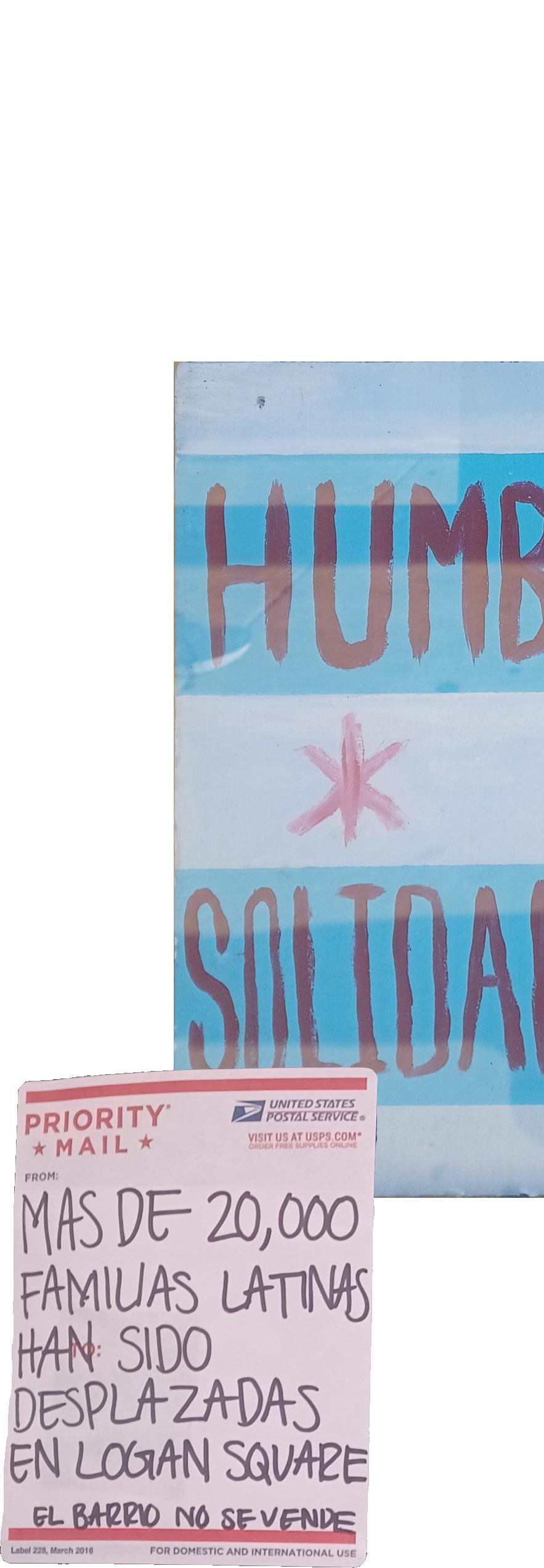
Corrall, Clarissa, and Felix LaFourtune. “Gentrification near the 606: Logan Square, Humboldt Park.” Gentrification Near the 606: Logan Square and Humboldt Park, 8 May 2020, redlineproject.org/humboldt_gentrification.php.

While working in Alderperson Fuentes’s office, I’ve begun to see alarming trends in who knows what. The incoming gentrifying population seems to know, at least somewhat, how the city operates, how to file complaints, and seem to be knowledgeable about city legislation and city ordinances. But those that are suffering the most - los Puertorriqueños, the Latinos, the Black and Brown members of the community - don’t seem to have the same knowledge as others do. I believe that this is because of the many years of inner-city disinvestment into this neighborhood, the obvious federal disinvestment into communities of color, and the distrust so many people of color have of the government. But what needs to happen is that those members of our community are educated and empowered - that is what Humboldt needs the most right now, in my opinion. It needs those who make up its bulwark to be educated on their rights and what they as the majority members of this community deserve.
I understand that it is exhausting to educate yourself on your own plights, and I understand that we as people of color and specifically as Puertorriqueños have been fighting and struggling for so long, and that we are tired, and that we may not have the energy to keep going, but we must. We must continue the fight. We must continue to educate, and invest in our coming generations of youth of the fight we are fighting so that they may carry on in our absence. We shall still fight to make the world a better place for those generations, but we need to understand the likelihood that they will have to fight too, and prepare them for that. The world isn’t perfect, and it probably never will be, but that doesn’t mean we should stop fighting for it.
For those looking for resources in the Humboldt Park area programs can be found on the PRCC’s website (https://prcc-chgo. org/). Programs include economic development, education, public health, and housing. They also have multiple offices throughout Humboldt Park and Division Street that can provide individuals with information for other outside resources. As does Alderperson Fuentes and her staff at 2511 W Division (773-395-0413). Rincon Family Services is another organization worth mentioning, pushing for the advocacy and education of individuals and families (773-564-9070). More information can be found on the PRCC’s website which was linked earlier in this paragraph.


Between the ‘60s and ‘70s, Puerto Ricans in that city experienced discrimination, police violence, and marginalization which sparked a strong response from Humboldt Park residents.
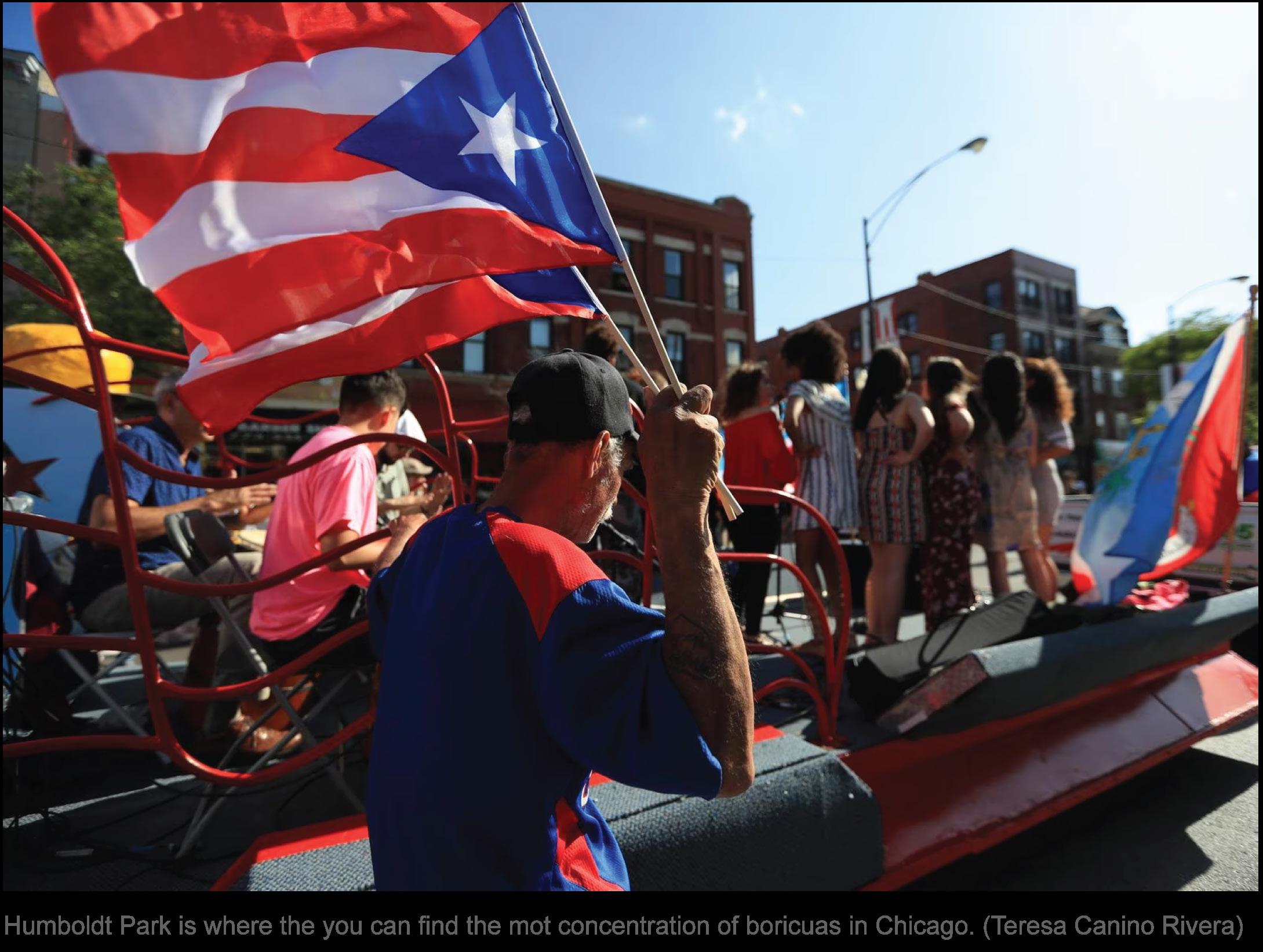
Chicago - For half a century, the history of Chicago’s Puerto Rican Parade, which will be celebrated again next Saturday, has been tied to the resistance and activism of the city’s Puerto Rican population.
The two uprisings - in 1966 and 1977 - were linked to this parade.
“Nowhere else have we seen two Puerto Rican rebellions with the impact these two had and they
based in Humboldt Park.
On June 11, 1966, the first Puerto Rican Day Parade took place downtown Chicago. After the event, Arcelis Cruz was shot by a police officer which triggered
a series of uprisings that ran from June 12 to 14, 1966 on Division Street between Damen and California Avenues.
This was the first, most violent, and longest
uprising (https://prcc-chgo. org/2019/08/04/fromdespair-to-hope-40-yearsafter-the-division-streetriots/) in Puerto Rican history in the United States.

both took place here, on Division (Street),” said José López Rivera, Professor and Executive Director of the Juan Antonio Corretjer Puerto Rican Cultural Center (https://prcc-chgo. org/) (PRCC),
That year, Chicago Mayor Richard J. Daley declared the first week of June as Puerto Rico Week. Community leaders saw this as a true gesture of inclusion and recognition of Chicago’s growing Puerto Rican community.
“When we celebrated our
first parade, it was under terrible repression. The FBI and Chicago police were waiting for us with machine guns in the tunnel of St. Mary’s Hospital,” López Rivera recalled.
The second uprising took place in June 1977. It began during the Puerto
Rican Parade downtown Chicago. This uprising is known as the Humboldt Park Riots (https://www. facebook.com/profile. php?id=100035389702928). That morning, bombs went off near the Chicago mayor’s office.
Continue reading on pg.20
In a statement broadcast on radio, the Armed Forces of National Liberation (FALN), a Puerto Rican clandestine organization with a cell in Chicago, claimed responsibility for the bombing.
“It was a way of protesting against the parade and
creating a dramatic protest against Puerto Rico colonial situation... The idea was, how can you celebrate Puerto Rican Day without really understanding the problems,” said López Rivera, referring to the tensions caused by government neglect and police violence.
The events of 1977, which began in the afternoon and led to the murder of two young Puerto Ricans, Julio Osorio and Rafael Cruz, sparked community outrage and people took to the streets again.

Beginning in 1978, the PRCC organized the People’s Parade in Humboldt Park.
For many years, there were two parallel parades, one downtown and the other in
Humboldt Park on Division Street. The downtown parade is no longer held.
“We decided to organize a People’s Parade (in Humboldt Park) to celebrate it as a counter-narrative to
the downtown parade, which was basically a commercial expression of Puerto Rican culture without any kind of social and political message,” said López Rivera.
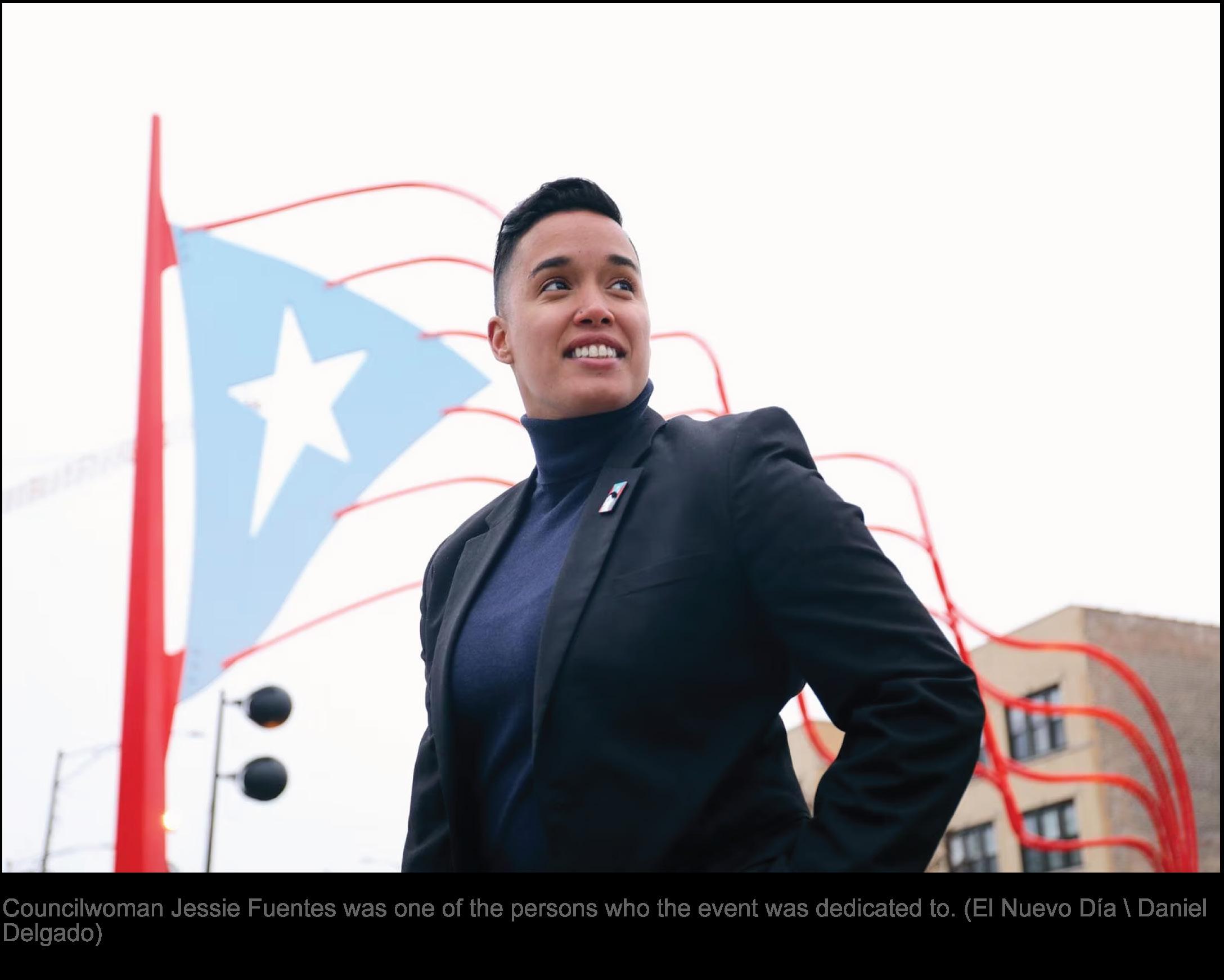
In recent years, local officials, including the governor of Illinois and the mayor of Chicago, have participated in the parade. Keeping the parade in the community had a social, political, and economic element: it validated the community and supported local businesses.
“The parade has become
the place to come for Puerto Rican affairs. If you think back to the beginning of the parade and see it now, 45 years later, it has become this true celebration of the people without intimidation and, of course, with the recognition it deserves from the authorities,” López Rivera said.
The Chicago Paseo Boricua will be the home of the annual parade next Saturday, starting at 2 p.m., as part of the Puerto Rican Festival. This year they are celebrating two milestones: the 50th anniversary of the PRCC and the 45th anniversary of the People’s Parade.
Continue reading on pg.22
The Puerto Rican Festival will also be dedicated to the renowned journalist Juan González; the recently elected Councilwoman for District 26, Jessica “Jessie” Fuentes; and the owner of the emblematic Paseo Boricua store Lilly’s Records, Carmen “Lilly” Martínez, that is celebrating its 40th anniversary. Fes Oquendo, a Puerto Rican boxer from Chicago, and Daniel Ramos, former president of the Parade will be the special guests this year.
Martínez, 84, said she was pleased with the recognition. Her granddaughter, Vanessa Maza, said she was excited because her grandmother “deserves it.”
“She’s been here for so many years, 40 years, and she’s always been quiet doing business. She has worked all her life and now it’s her turn to be celebrated for all her accomplishments,” she said.
For Councilwoman Fuentes, being the guest of honor is a great privilege.
“I know how much work goes into the Parade and how hard the Puerto Rican Cultural Center works to
remain in a community that has been under attack by gentrification for decades, and what it means to organize this Parade every year and ensure that Puerto Ricans, not only from Humboldt Park, but those from Wisconsin, Michigan and the suburbs can come to our community that day to celebrate their Puerto Ricanness,” Fuentes said.
Activities begin on Thursday. That night of the traditional coronation of Paseo Boricua´ Cacica Queen and Cacique King, selected among transgender participants. The queen and king parade on the Vida/Sida float, a PRCC sexual health project focused on the LGBTQ population.
“Our parade is the only one to crown a transgender woman as our queen. I’ve been ‘queer’ my whole life. Knowing that you can come to the Puerto Rican Parade and see as many gay flags as Puerto Rican flags makes me feel very comfortable in that intersectionality. We are the only community that centers the queerness of our community while celebrating our Puerto Ricanness,” said Fuentes.
Illinois Governor J.B. Pritzker and the city’s new mayor, Brandon Johnson, are two of the authorities invited.


Time: 3:00- 4:00pm

La Olla is a latine affinity space that looks to educate and provide students with a sense of community. This affinity space is for those who feel underrepresented even within our university that holds HSI status. La Olla does not discriminate against students of any culture who wish to participate. Hosted by NEIU s Que Ondee Sola (QOS). The oldest Puerto Rican and Latinx publication in the United States.


If you are interested in Que Ondee Sola whatsoever please reach out to us about your involvement. You do not have to be Puerto Rican or Latinx. You do not have to be greatly educated on the Puerto Rican struggle. There are no requirements, simply that you have an open mind that is ready to take in and put out information.
The only way we can fight back against the oppression of all people is with the involvement of people like YOU. Use YOUR voice to talk about problems that are important to YOU. Make your voice heard. Get involved.


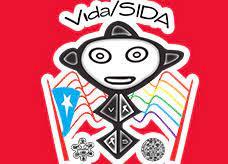

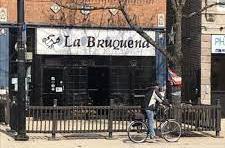



The Angelina Pedroso Center for Diversity and Intercultural Affairs is committed to engaging and co-creating an environment of inclusivity across cultures, socioeconomic class, sexual orientation, gender, and other social identities with our students. In this work, we recognize that as a Minority Serving Institution (MSI) and the state’s oldest Hispanic Serving Institution (HSI), we must lean into the opportunity to build affinity spaces for historically marginalized communities. Our affinity spaces are held spaces specifically set aside for students who share a specific identity or commonality to come together.
Pedroso Center affinity spaces have become some of our best-attended programming within our space and include; Q-Spot (LGBTQ2IA+ Affinity Group), Sister Talk is BIPOC (Black, Indigenous, People of Color) sisterhood affinity space, Barber Shop Talks our Black male identified affinity space and our newly developed Latinx Affinity space. These spaces are not exclusive, our affinity spaces are created to unapologetically center members of specific backgrounds, experiences, and communities. Our created affinity spaces are open to all who wish to intentionally uphold the voices and lived experiences of those being centered.
As an intercultural center, our team recognizes that communities benefit from having an affinity space to grapple with the challenges of being college students and navigating hypersegregated urban communities. Affinity spaces also have components of intersectionality to broaden the impact of the various positionalities that our communities hold. Most recently we have developed a Solidarity Affinity space that engages topics such as Anti-Blackness in the Latinx community. During the month of November, we recognize Native and Indigenous Peoples Heritage Month and will explore anti-indigeneity in Black and Latinx communities. As practitioners who lean into a healing-centered framework (Ginwright, 2018) we work intentionally to interweave the strengths and build on the challenges in our communities to foster growth and transformation.


 Illustration by: Jesus Robles
Illustration by: Jesus Robles